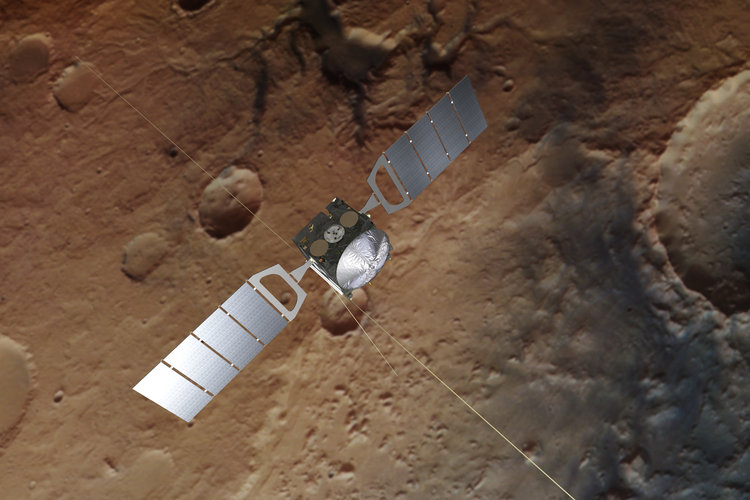
Shortly after launch, a problem with Mars Express’ solar array wiring led to only 60% of the expected power being available. This setback required the control team to develop an entirely new mission concept within the six months it took to reach Mars, adjusted the power settings and managing to increase it to around 70%.
On its way to Mars, the spacecraft was also recovered from several Safe Modes, and during the deployment of the MARSIS radar boom, the first part became stuck. The team had to devise a solution to warm it up and successfully release it – we feel you, Juice.
In 2011, Mars Express encountered a mass memory problem that resulted in the loss of its long-term memory storage capabilities. In response, teams developed a new operational concept using the spacecraft’s short-term memory storage, which required finding a way to fit 3000 ‘telecommands’ into a queue that could only hold 117 – which they did.
As the spacecraft's batteries also aged over time, the mission control team implemented increasingly elaborate power-saving measures to maximise its longevity – by optimising power consumption and usage they made Mars Express one of the most efficient vessels to leave Earth.



